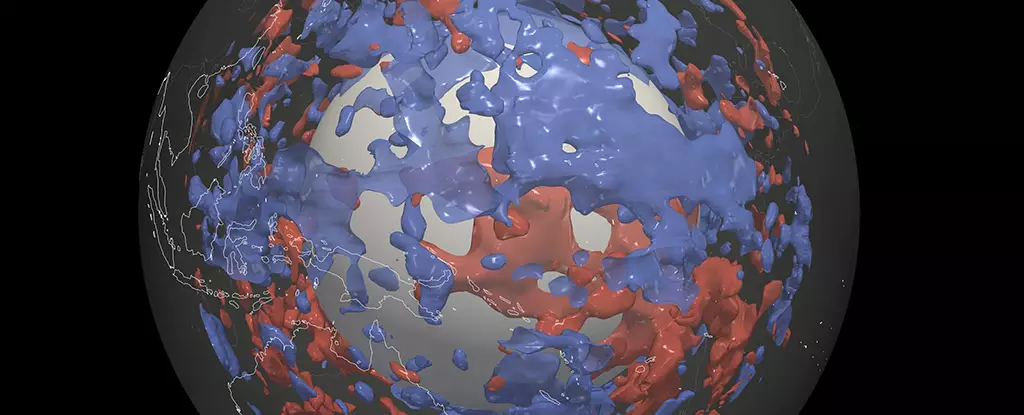At the heart of our planet lies a complex and dynamic system composed of diverse materials that shape the Earth’s geological framework. In recent strides made by researchers at ETH Zurich and the California Institute of Technology, seismic waves have emerged as pivotal tools for exploring this unseen world. This article delves into their groundbreaking research that reveals unexpected structures in the Earth’s lower mantle, challenging our current understanding of tectonic processes.
For over a century, geologists have relied on seismic waves—essentially vibrations that travel through the Earth—to map the subsurface landscape. This natural phenomenon works similarly to sound waves; as they traverse various materials, they exhibit distinct behaviors, with some traveling quickly through dense rocks and others slowing down in less dense regions. By analyzing these waves from the Earth’s surface, scientists can deduce characteristics about the materials lying beneath. However, the journey from seismic signals to predictable geological interpretations has been hampered primarily due to limitations in data processing capabilities—until now.
The researchers capitalized on the immense computational power of the Piz Daint supercomputer. It enabled them to analyze a comprehensive array of seismic wave data, enhancing the depth and detail of the subterranean map of Earth’s lower mantle. This innovative approach has led to the revelation of unusual solid structures that appear to be fragments of tectonic plates partially submerged in the mantle. The findings indicate that these high-density rock masses do not align with current geological understanding related to subduction zones, which are typically believed to be the ultimate resting place for such geological remnants.
The study’s findings suggest that these fragments can be found in regions that are far removed from traditional subduction zones. For example, beneath the western Pacific Ocean lies a surprising number of these dense blobs, raising questions about their origins. Thomas Schouten, an Earth scientist involved in the research, emphasizes that the widespread distribution of these structures may point towards processes that have not been previously accounted for in mantle dynamics. The presence of these anomalous formations implies a much more complex geological history spanning millions of years.
While the seismic waves provide valuable insights, Schouten stresses the importance of understanding what lies beneath the surface in more detail. The wave speeds measured represent a single aspect of the Earth’s internal composition, and thus, relying solely on this information can present an oversimplified version of the underlying geology. The next steps involve investigating the varied material properties that contribute to these observed wave speeds.
Two primary hypotheses arise regarding the nature of these enigmatic structures: they could either be ancient, silica-rich materials that have persisted since the Earth’s formation some 4 billion years ago or areas where iron-rich rocks have collected as a result of myriad mantle movements over the eons. Such distinctions have profound implications for our understanding of mantle convection and tectonic evolution.
To fully grasp the significance of these discoveries, further investigation into the composition and history of these intriguing structures is imperative. Understanding whether these remnants are relics of ancient tectonic activity or current manifestations of deeper geological processes will enrich our knowledge of the Earth’s evolution. Each of these fragmented pieces in the lower mantle may hold a unique story about our planet’s past and its dynamic nature.
The pioneering work conducted by ETH Zurich and Caltech is reshaping our understanding of the Earth’s inner workings and challenging long-held beliefs regarding tectonic plate dynamics. The use of advanced computational methods to analyze seismic waves is paving the way for a more nuanced understanding of geological phenomena, and as research progresses, we can look forward to uncovering the hidden tales that lie deep beneath our feet. The Earth’s mantle is not just a passive layer; it is an active participant in the unfolding story of our planet, full of secrets yet to be revealed.


Leave a Reply